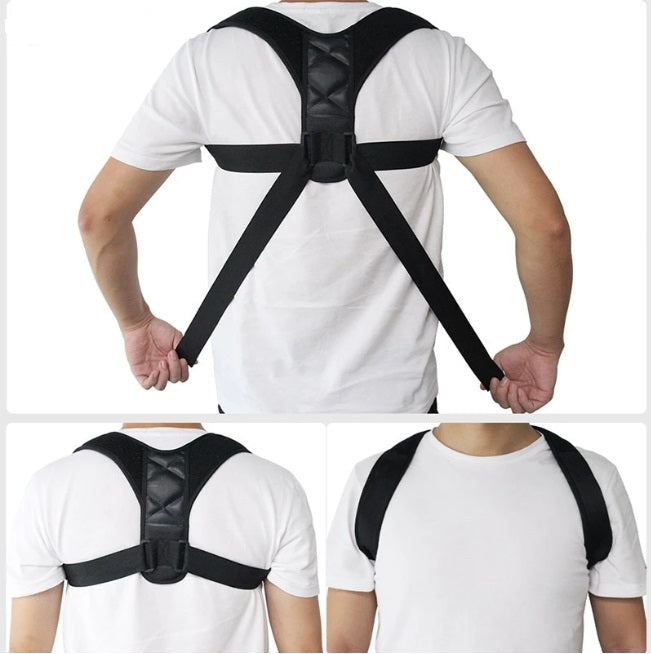FREE SHIPPING ON ALL ORDERS
EASY 14 DAY RETURN POLICY
FREE SHIPPING ON ALL ORDERS
EASY 14 DAY RETURN POLICY

May 04, 2020
I got involved in researching shoulder braces after I had been stabbed in my store by some characters trying to rob me. After recuperating from my injuries I developed extensive next and upper shoulder cramping and spikes of pain. I came across this article which really helped me find the perfect shoulder braces to help me deal with the pains which I needed help with. Read below:
Julie Edwards, Laura B. Fenwick, in Clinician's Guide to Assistive Technology,
Specialists use dynamic shoulder orthoses (SO) to prevent dislocation of the glenohumeral joint. The SO is typically made from canvas or cloth material and consists of a chest belt and a humeral cuff. The orthosis is available premanufactured, and the orthotist custom fits it to the patient. The orthotist typically fits this orthosis on athletes participating in contact sports.
Specialists use elbow orthoses (EO) for fracture management, dislocations, and soft-tissue injuries. The orthosis consists of humeral and forearm cuffs with an elbow joint. Many joint options are available depending on the intended goal of the orthosis. Also, a wide variety of elbow orthoses with adjustable joints are available from manufacturers. A specialist can custom mold them when needed.
The balanced forearm orthosis (BFO) is a prefabricated device also known as a mobile arm support. The specialist mounts the orthosis to a wheelchair. It operates on two physics principles: inclined planes and first-class levers. The device consists of a wheelchair assembly bracket, a proximal arm, a distal arm, and forearm trough (Figure 14-7). Other accessories are available depending on the individual's needs. The user needs to have a muscle grade strength of 2 + or better in one or more of the following muscle groups: neck, trunk, shoulder, or elbow.8
Jared Howell, in Atlas of Orthoses and Assistive Devices (Fifth Edition), 2019
The number of pathologies requiring the use of a shoulder orthosis are significant and range from acute to chronic and from injury to disability. This section considers these in aggregate to provide a framework of use for the individual categories. This is particularly applicable in this category, because the need for clinical intervention at the shoulder often results in additional complications or needs more distally in the elbow, wrist, or hand. Thus shoulder orthoses (SOs), shoulder–elbow orthoses (SEOs), and shoulder–elbow–wrist–hand orthoses (SEWHOs) are discussed here. Although both static and dynamic variants are available, dynamic shoulder orthoses are typically classified in other ways and have unique categories of their own, such as mobile arm supports or exoskeletons, which more appropriately position the arm for completion of the desired task. These devices are presented at the end of the section on SOs.
SOs in isolation are typically driven by acute musculoskeletal injuries. To be classified in this category they should not cross any other joints beyond the anatomical shoulder. Treatment categories include dislocations, partial rotator cuff injury, small fractures, and tendon and ligament damage. Orthoses in this segment are centered around immobilization or limiting of the joint ROM in any of the three anatomical planes of motion. Most if not all devices in this section are available as off-the-shelf devices, although customized versions may be available through the orthotist if the physiologic stature falls on either end of the available range. These include flexible stabilizing orthoses that are neoprene or fabric stabilizing orthoses applied after injury or dislocation. They function to limit excessive glenohumeral flexion and extension and prevent reinjury. Other sport-specific options are also available.
SEOs are much more common than true SOs and are often used in similar injury states as described in the previous section. Additional pathologies include brachial plexus injuries, postsurgical applications, and other dislocations. These devices provide support to the affected segment of the limb and have varying levels of function.
Perhaps the most common SEO is the arm sling, which can be quite useful in temporary situations in which neck pain or strain may develop. Variations of the arm sling have attached abduction wedges or struts to maintain the desired abduction angle for optimal healing. The Gunslinger orthosis (Fig. 12.14) was originally developed at Rancho Los Amigos Medical Center provides a more rigid controlled positioning of the shoulder and elbow through a direct link of the limb segment to the torso. Compared with the sling and abduction pillow options, the coupling between the forearm trough and iliac cap can be customized to permit a variety of motions, including glenohumeral joint internal and external rotation, flexion–extension, and horizontal flexion–extension as well as flexion–extension of the elbow joint. The arm and hand are held in a cosmetically pleasing position, and the hand is available for use, enabling early functional recovery. The gunslinger SEO is easy to put on and take off, and full unweighting of the arm is feasible if required for treatment. One less common indication for a gunslinger orthosis would be for a brachial plexus trauma in which the C7 to T1 spinal roots are spared, resulting in isolated proximal weakness with good distal strength and function.
 to read the rest of the article go here:
to read the rest of the article go here: